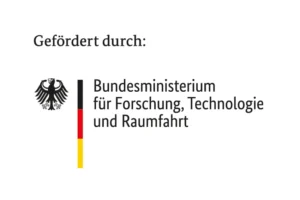BACKGROUND
Lausitz and Brandenburg have many remote regions and sparsely populated areas. In this context, digitization of measuring points is a major challenge, e.g., for monitoring groundwater, water bodies, forest fires, structures, infrastructure or terrain in post-mining landscapes, as well as in digital agriculture. Especially the radio interface for networking sensors with cloud applications or base stations is difficult to realize in many cases. On the one hand, the required high ranges are problematic, on the other hand, an efficient use of the battery capacity, which is limited in remote locations without a central power supply. On the other hand, there are a number of sensor nodes available on the market that can address the actual monitoring tasks.
TECHNOLOGY
This work package aims to design an embedded radio frequency system, which can be installed between commercial sensor nodes and the antenna and maximize both the range and the runtime of the overall system.
The goal is to design the overall system of a universal radio front-end that can be inserted between the output stage of commercial sensor nodes and the antenna as a supplement to commercial sensor nodes, increasing the range of the radio link from a few 100 m to more than 1,000 m. The system will also be designed to maximize the energy efficiency of the sensor node. Furthermore, the energy efficiency of the sensor node is to be increased by this add-on module.
ADVANTAGES
- Universal use
- Large tuning ratio > 20
- CMOS compatible
- Low phase noise
APPLICATION
- Radio front-end systems
- HF-Filter
- Sensors and measurement
- IoT, 5G
STATUS
- MEMS varactor demonstartor GEN0 fabricated in clean room
- In progress: characterization and integration in tuner circuitry
CONTACT
Michael Stolz
Fraunhofer IPMS
Institute for Photonic Microsystems
Konrad-Zuse-Straße 1
03046 Cottbus
M: michael.stolz@ipms.fraunhofer.de
T: +49 (0)355 69-2483



